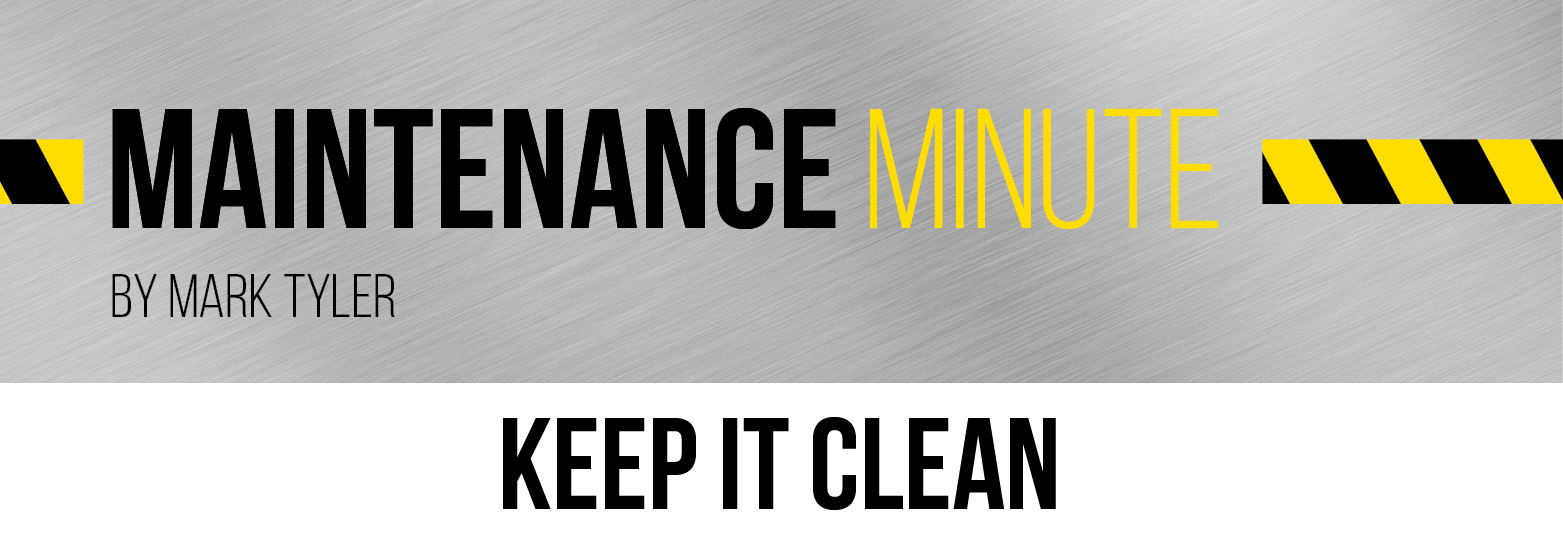|
Dec
19
2022
|
|
Posted 3 years 0 days ago ago by Admin
|
|

Have you ever heard your mother or grandmother quote John Wesley saying, “cleanliness is next to godliness”? Turns out that quote is effective in aircraft maintenance as well. I like to think that cleanliness is the twin brother to order, and all aircraft maintenance requires cleanliness and order to attain the highest level of professionalism.
When I was a young helicopter mechanic at Carraway Hospital in Birmingham, Alabama, the first job my mentor assigned me was to wash the helicopters each morning. The primary reason was to display a professional image for the hospital. Next, he explained to me that washing and cleaning the helicopter was another way to inspect the machine and look for obvious defects. I quickly learned this was sound advice and I practiced it consistently. While washing helicopters, I have discovered many defects, including busted chin bubbles and windshields, broken antennas, missing or hanging strobe lights, corrosion, various cracks, bird nests, and the occasional dead bird just to name a few.
Utility helicopters are more difficult to keep clean than corporate helicopters, but it is equally important. Problems and defects lie under grease, grime, and soot. I once had a director of maintenance that required us to wash and clean every helicopter before it came in for inspection. He said, “You cannot find it if you cannot see it.” That reasoning has stayed with me all these years. Cleaning your aircraft is far more than making it pretty. It is also an effective tool to locate defects before they become a problem. Now, before a helicopter comes into the hangar for maintenance, it is evaluated for cleanliness to determine if it can be thoroughly inspected in its present condition. When the inspection is completed, the aircraft is washed and wiped down. When the ground runs an operational check flight, it will become easier to notice any new leaks or issues. Also, keeping your aircraft clean will help sustain the paint and keep it looking good. This practice might save dollars: Have you priced a paint job lately?

I am a big believer in the value of paying close attention to the little things. Just one degree off course in navigation will take you to an unplanned destination. A faulty packing or seal will cause a fluid leak and temporarily ground the aircraft. It can and will leave you stranded. As professional mechanics, it is our responsibility to take ownership of everything that affects our machine. Yes, we must clean the windshield and remove the bugs. It is part of basic customer service and your customer will never trust you with significant things unless he can trust you with little things. Make it a common practice to present your customer with a clean aircraft and he may make it a practice to return to your shop next time maintenance comes due.
About the author: Mark dedicated the majority of his career serving the helicopter EMS community from Base Mechanic to Director of Maintenance. As Vice President & General Manager of Precision Aircraft Services, Mark now serves helicopter operators from many sectors to include Air Ambulance, Law Enforcement, Private Owners, etc. When not at work, Mark can be found spending time with his family or sitting in a tree stand.
READ MORE ROTOR PRO: https://justhelicopters.com/Magazine
WATCH ROTOR PRO YOUTUBE CHANNEL: https://buff.ly/3Md0T3y
You can also find us on
Instagram - https://www.instagram.com/rotorpro1
Facebook - https://www.facebook.com/rotorpro1
Twitter - https://twitter.com/justhelicopters
LinkedIn - https://www.linkedin.com/company/rotorpro1